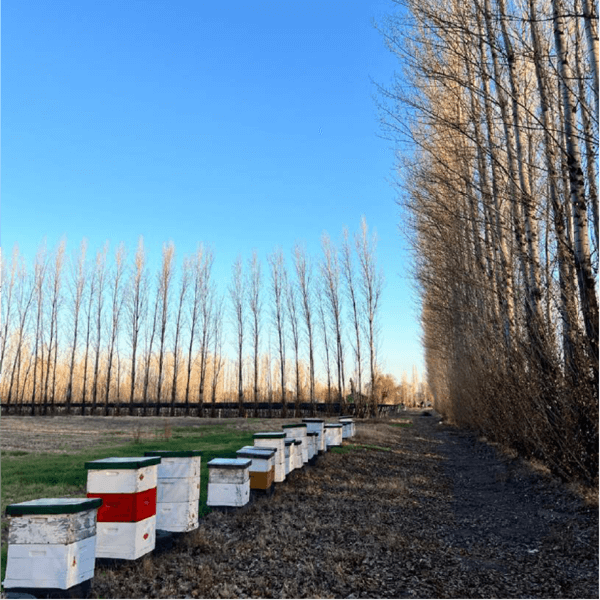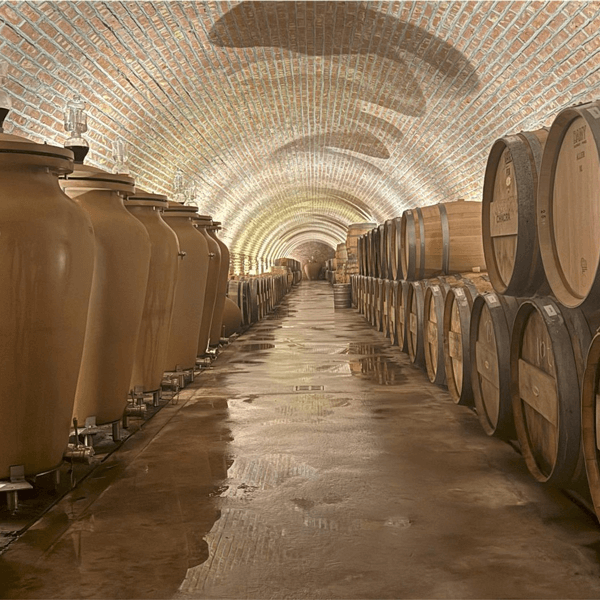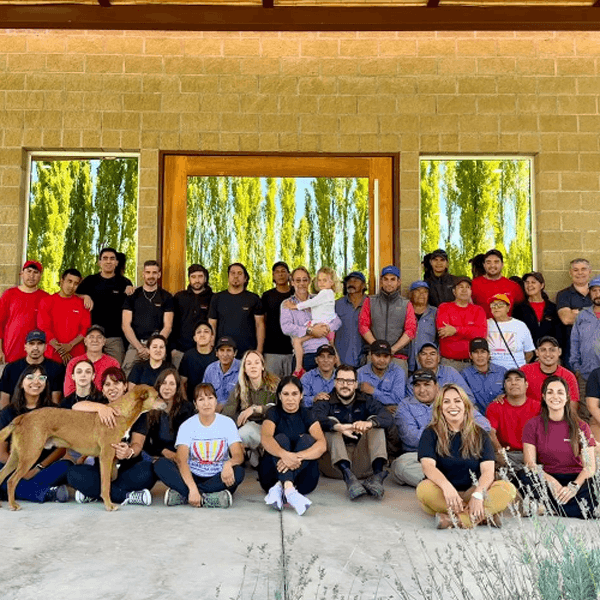
2022 BARDA PINOT NOIR Bodega Chacra
Rio Negro Patagonia Argentina
12.5%
Red
Pinot Noir.
Vegetarian, Vegan, Certified Organic, Bio-dynamic
Aged for eight months, 24% in French oak barrels (5% new), 41% in concrete tanks and 35% in stainless-steel tanks. Vibrant, very pale strawberry red. Lots of fresh red fruit on the nose, with thyme undertones. Vib...(read more)
Oliver Coleman, www.JancisRobinson.com
2021 SIN AZUFRE Pinot Noir Bodega Chacra
Rio Negro Patagonia Argentina
12%
Red
Pinot Noir.
Vegetarian, Vegan, Certified Organic, Bio-dynamic, Low-alcohol
Made without added sulphur (azufre) – although the back label still says 'Contains sulfites'. Organic and biodynamic grapes from vines planted in 1955. Fermented in concrete with indigenous yeasts for 15 days and 60% mat...(read more)
Jancis Robinson OBE MW
2022 LUNITA Pinot Noir Bodega Chacra
Rio Negro Patagonia Argentina
12%
Red
Pinot Noir.
Vegetarian, Vegan, Certified Organic, Bio-dynamic
The 2022 Pinot Noir Lunita hails from Mainqué in Río Negro. Fermented with 50% whole clusters, this ruby-hued Pinot unfolds with notes of strawberry yogurt, cherry, chamomile and mustard seed. Dry and lean,...(read more)
Joaquin Hidalgo, Vinous.com
2022 ROKA MALBEC Bodega Chacra
Rio Negro Patagonia Argentina
12.5%
Red
Malbec.
Vegetarian, Vegan, Certified Organic, Bio-dynamic
A very vibrant malbec showing minimal extraction, if any at all. Tangy blueberries and red fruit with bright acidity and soft tannins. The fresh, fruit finish highlights purity. This is all about drinkability and freshne...(read more)
Zekun Shuai www.jamessuckling.com
2022 CHACRA Cincuenta y Cinco '55' Pinot Noir Bodega Chacra
Rio Negro Patagonia Argentina
12.0%
Red
Pinot Noir.
Vegetarian, Vegan, Certified Organic, Bio-dynamic
Aged for seven months 55% in concrete tanks, 41% in used French oak barrels and 4% in amphorae. Perfumed nose, with that floral character allied to lovely depths of red fruit. A subtle and intertwined earthy chara...(read more)
Oliver Coleman, www.JancisRobinson.com
2022 MAINQUÉ Chardonnay Bodega Chacra
Rio Negro Patagonia Argentina
13%
White
Chardonnay.
Vegetarian, Vegan, Certified Organic, Bio-dynamic
Made in collaboration with Jean-Marc Roulot. Aged for 11 months, 46% in barrique (9% new), 36% in stainless-steel tanks and 18% in concrete eggs. No malolactic conversion. Light lemon/gold. Not the most direct nos...(read more)
Oliver Coleman, www.JancisRobinson.com
2023 MAINQUÉ Chardonnay Bodega Chacra
Rio Negro Patagonia Argentina
13%
White
Chardonnay.
Vegetarian, Vegan, Certified Organic, Bio-dynamic
Apple, brioche, flint, pear and slate aromas with hints of apple tart follow through to a full body with gorgeous richness and depth, yet it grows on the palate. Very vertical and goes deep. Best ever. Drink or hold.
James Suckling, www.jamessuckling.com
2022 CHACRA CHARDONNAY Bodega Chacra
Rio Negro Patagonia Argentina
13%
White
Chardonnay.
Vegetarian, Vegan, Certified Organic, Bio-dynamic
Aged for 11 months 65% in French oak barrels (15% new), 35% in amphorae. Certified biodynamic. Light straw with flecks of green. Very similar in style to the Mainqué 2022 in its subtle charms, but there's m...(read more)
Oliver Coleman, www.JancisRobinson.com
2022 CHACRA TREINTA Y DOS '32' Pinot Noir Bodega Chacra
Rio Negro Patagonia Argentina
13%
Red
Pinot Noir.
Vegetarian, Vegan, Certified Organic, Bio-dynamic
#52 of the Top 100 Wines of the World for 2024. Violets, black cherries, raspberries, crushed stone and orange blossoms. Notes of flower stems, dried sand and bark. Medium- to full-bodied with layers of fine tanni...(read more)
James Suckling, www.jamessuckling.com
2023 BARDA PINOT NOIR Bodega Chacra
Rio Negro Patagonia Argentina
13%
Red
Pinot Noir.
Vegetarian, Vegan, Certified Organic, Bio-dynamic
Magnums
A vivid and crunchy pinot with lots of sea salt, strawberries and hibiscus with hints of violets and sandalwood. Notes of fresh flower stem. it’s medium-bodied with pretty fruit and a long, bright finish with plenty of e...(read more)
James Suckling, www.jamessuckling.com
2021 CHACRA Cincuenta y Cinco '55' Pinot Noir Bodega Chacra
Rio Negro Patagonia Argentina
12%
Red
Pinot Noir.
Vegetarian, Vegan, Bio-dynamic, Practising Organic
Magnums
The élevage for the 2021 Cincuenta y Cinco was different from the past; they have now aged 40% in concrete tanks (it used to be 25%), 40% in French oak barrels and 20% in clay amphorae for nine months. They use co...(read more)
Luis Gutierrez, www.robertparker.com





